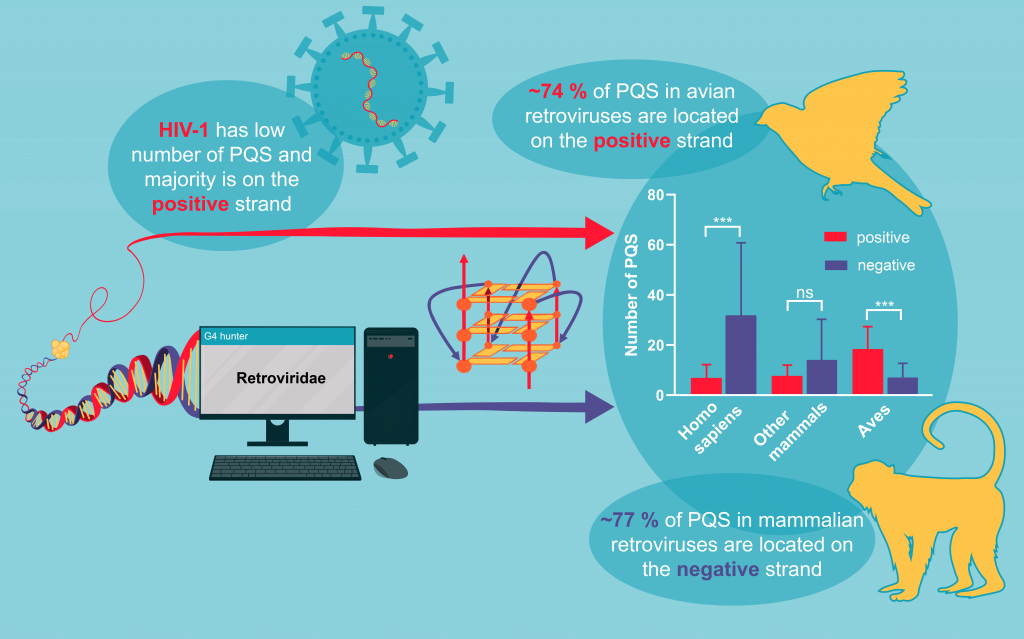We are delighted to announce the very first publication from our newly formed NanoPrecMed Consortium! Dr. Václav Brázda and his team at the Faculty of Chemistry, Brno University of Technology, have made an exciting discovery about how certain structures called G-quadruplexes (G4) appear in retroviral genomes.
Retroviruses (such as HIV) are among the most studied viruses because they can cause diseases like cancer and AIDS. In this new study, Dr. Brázda’s team found that G-quadruplexes are more common on the “negative” strand of most mammalian retroviruses—though there are exceptions like HIV-1—while in birds, these structures tend to appear on the “positive” strand. These G-quadruplexes might serve as potential “roadblocks” that could interfere with viral replication, making them interesting targets for future antiviral therapies.

Why is it exciting for Nano Precision Medicine?
G-quadruplexes are special shapes formed by certain sequences in DNA or RNA. Scientists believe they could be used in precision medicine because they can influence how viruses and cells function. By knowing exactly where these G-quadruplexes are located, researchers can explore new ways to design ultra-targeted treatments. If we can figure out how to block or modify these structures, we may be able to create therapies that stop viruses in their tracks – without harming healthy cells. This is a key goal of the NanoPrecMed Consortium, which strives to develop precise, nanobioparticle-based treatments that tackle diseases more effectively.
Congratulations to Dr. Brázda and his team!
Their work not only deepens our understanding of how retroviruses operate but also highlights new opportunities to develop highly specific, next-generation therapies. With this discovery, the NanoPrecMed Consortium sets the stage for exciting advancements in precision nanomedicine.
Read the full paper here: Asymmetric distribution of G-quadruplex forming sequences in genomes of retroviruses
